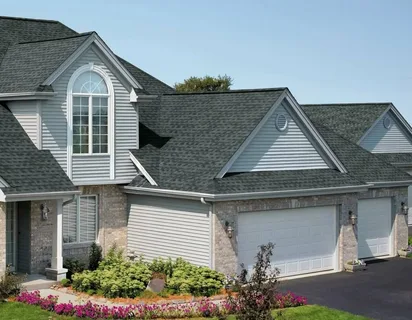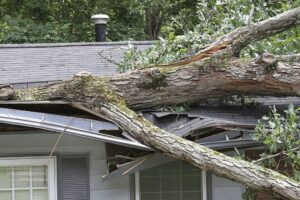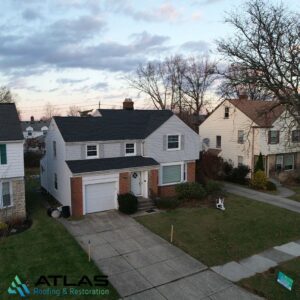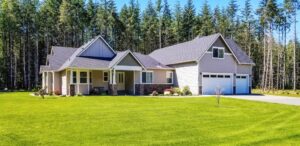Maintaining a multi-family property comes with a range of responsibilities, and one of the most important among them is taking care of the roofing system. Whether you manage an apartment complex, condominium, or a townhouse community, a durable, well-maintained roof is essential for protecting your tenants and preserving your investment.
Multi-family roofing plays a vital role in the structural integrity of the building. It’s not just about keeping the rain out — a good roof also affects energy efficiency, tenant satisfaction, and long-term property value. This guide explores everything you need to know about multi-family roofing, including how it differs from residential roofing, common materials used, maintenance tips, warning signs of damage, and how to find the right roofing contractor.
Understanding Multi-Family Roofing
Multi-family roofing refers to roofing systems designed for buildings that house multiple separate living units. This could include duplexes, townhome communities, apartment buildings, student housing, or senior living complexes. The roof of a multi-family building is not only larger in scale but also more complex in structure than that of a single-family home.

What makes multi-family roofing more demanding is the coordination it requires. Property managers must work with roofing contractors while also considering the schedules, safety, and convenience of multiple tenants. Legal codes, HOA requirements, and insurance obligations also come into play, which makes the planning process more involved.
Roofing Materials Used in Multi-Family Properties
Different types of multi-family properties require different roofing solutions. The most commonly used material is asphalt shingles, especially in townhomes and low-rise buildings. They’re affordable, easy to install, and come in a variety of colors and styles. However, they typically last around 20 to 30 years, which is shorter than other materials.
Flat or low-slope roofs often use materials like TPO (Thermoplastic Polyolefin). TPO roofing is durable, energy-efficient, and reflects sunlight, which helps reduce energy costs. Another common flat-roof material is modified bitumen, which offers excellent waterproofing and is applied in layers to create a protective barrier.
Metal roofing is another option that has gained popularity in recent years. It lasts significantly longer — often up to 70 years — and is highly resistant to wind, fire, and pests. While metal roofing can be more expensive upfront, its durability and energy efficiency can make it a wise investment.
In warmer climates, clay or concrete tiles may be used. These tiles offer excellent insulation and a unique aesthetic, though they are heavier and costlier to install.
Challenges of Multi-Family Roofing
One of the biggest challenges in multi-family roofing projects is coordinating with tenants. Replacing or repairing a roof can cause noise, disruptions, and safety concerns. Property managers must communicate effectively with residents, plan work during convenient hours, and ensure everyone is aware of any temporary changes.
Another challenge is logistical access. Roofing crews need space to store materials and park equipment. In larger buildings, this may require careful planning, especially in urban areas where parking is limited.
Drainage can also be a concern, especially for flat roofs. Without proper drainage, water can accumulate, leading to leaks, mold growth, and even structural damage. Ensuring that drainage systems are properly installed and maintained is critical for long-term roof health.
Compliance with local building codes, HOA guidelines, and safety regulations adds another layer of complexity. Mistakes in installation or material selection can result in fines, delays, or insurance issues.
Signs Your Roof May Need Repairs or Replacement
Regular roof inspections can help identify issues before they become costly. Warning signs include water stains on ceilings or walls, leaks during rain, sagging sections of the roof, and rising utility bills. If tenants report musty odors, that could indicate mold from moisture infiltration.
You might also notice granules from asphalt shingles collecting in gutters. This is a sign of aging shingles and can lead to more serious problems if ignored. Additionally, if HVAC systems seem to be struggling, poor ventilation from the roofing system may be contributing to the problem.
Deciding Between Repairs and Replacement
Deciding whether to repair or replace a multi-family roof depends on several factors. If the roof is relatively new and the damage is localized — such as a few missing shingles or a small leak — repairs might be sufficient. However, if the roof is more than 20 years old or if problems occur frequently, a full replacement may be more cost-effective in the long run.
Frequent patchwork can lead to a patchy, uneven surface that causes more leaks. A full roof replacement can also improve the building’s appearance, increase property value, and offer better energy efficiency.
An experienced roofing contractor can provide a detailed inspection and help you make the most informed decision based on your specific building and budget.
The Role of Preventative Maintenance
Preventative maintenance is key to extending the life of your roof and protecting your investment. Scheduling regular inspections — at least twice a year and after major storms — can help detect problems early. During these inspections, professionals check for cracked shingles, damaged flashing, debris buildup, and signs of moisture or mold.
Clearing gutters and drains is another important maintenance task. Blocked gutters can cause water to back up onto the roof and seep into the building. Trimming nearby trees can also reduce the risk of falling branches and leaf accumulation.
Keeping a maintenance log allows you to track work that has been completed and anticipate future needs. It can also come in handy if you need to file an insurance claim or warranty request.
Choosing the Right Roofing Contractor
Hiring the right contractor is one of the most important steps in a multi-family roofing project. You’ll want to work with a company that has experience specifically with multi-family properties, not just single-family homes. Multi-family roofing projects require additional expertise in scheduling, safety planning, and building codes.
Ensure the contractor is licensed, insured, and bonded. This protects you from liability in case of accidents or damage. Ask for references from past clients, and check online reviews to learn more about their track record.
Good communication is essential. Your roofing partner should be able to clearly explain timelines, budgets, materials, and warranties. Look for someone who provides detailed project proposals and who is responsive to questions or concerns.
The Shift Toward Energy Efficiency
Today, many property owners are looking for energy-efficient roofing solutions. Materials like TPO and metal reflect sunlight, helping reduce indoor temperatures and cut down on cooling costs. Some owners are also exploring solar panel installations or even green roofs that support plant life.
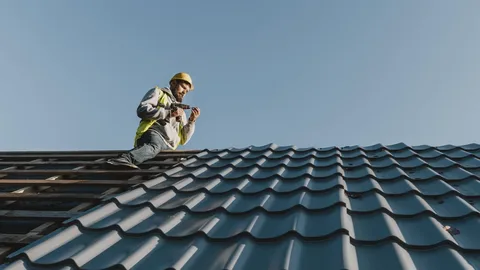
Energy-efficient roofing can reduce utility bills, improve tenant satisfaction, and support environmental goals. In some areas, local or federal incentives are available for energy upgrades, making it easier to offset installation costs.
Final Thoughts
Multi-family roofing is more than just a structural necessity — it’s a strategic investment in the comfort, safety, and value of your property. Whether you’re dealing with routine maintenance, damage from a storm, or planning a full replacement, understanding your options and responsibilities will help you make better decisions.
With the right materials, regular inspections, and a skilled contractor, you can extend the lifespan of your roof and avoid costly surprises. As a property manager or owner, your proactive approach to roofing can also enhance your reputation and keep your tenants satisfied for years to come.
Work With a Trusted Partner: Atlas Roofing & Restoration
When it comes to expert multi-family roofing services, Atlas Roofing & Restoration is a name you can count on. With a reputation built on quality, integrity, and customer satisfaction, Atlas offers tailored solutions designed specifically for multi-family properties.
From routine maintenance to full-scale roof replacements, their team handles every project with care and professionalism. They understand the unique needs of property managers and take pride in delivering results that stand the test of time.

